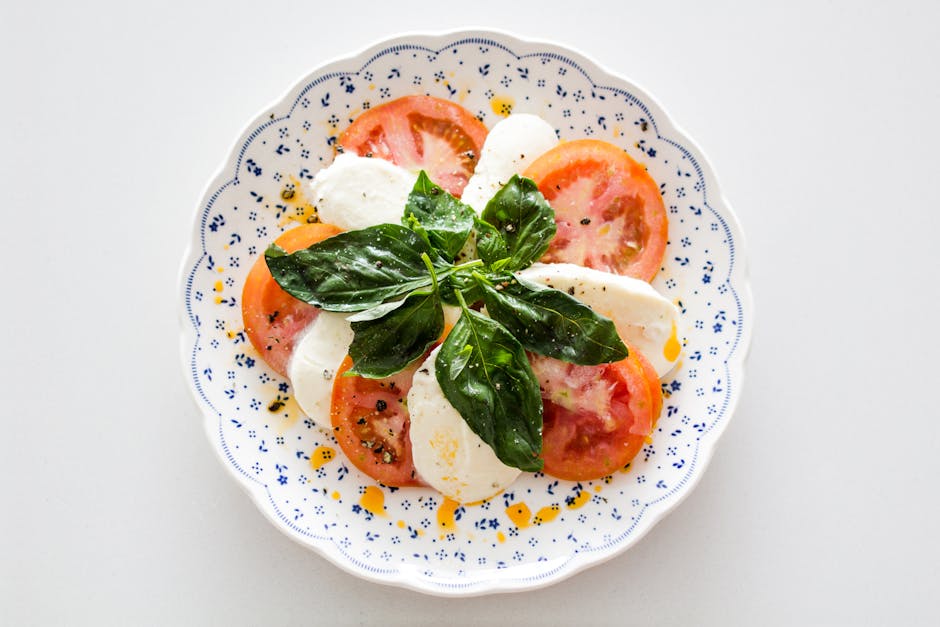Culinary Alchemy: Explore Unique Flavor Pairing & Fermentation
Cooking has often been considered an art, but in today's culinary landscape, it is a beautiful intertwining of art and science. One fascinating aspect of cooking that is frequently overlooked is the science of flavor pairing, particularly when it comes to fermentation. As we delve deeper into culinary alchemy, we discover how utilizing scientifically backed flavor pairing and fermentation techniques can lead us to create dazzlingly unique dishes that tantalize our taste buds. Ready to elevate your culinary prowess? Let’s explore!
What Is Flavor Pairing?

Flavor pairing, slightly reminiscent of a culinary matchmaking service, is the practice of combining ingredients that complement and enhance one another. At its core, flavor pairing hinges on the concept that certain flavors, aromas, and textures work harmoniously together based on their chemical compounds. Researchers from all over the world have delved into dissecting these pairings; for instance, a well-known study by M. Mulholland from the University of California highlights how specific flavor compounds unite various foods, resulting in more profound sensory experiences.
That being said, if one were to sprinkle a dash of fermentation into the mix, so much more awaits. Food fermentation, a process that transforms food through the action of microorganisms, not only adds depth to flavors but also boosts nutritional value. Together, exploring flavor pairings and fermentation can elevate your cooking to unchartered territory.
The Science Behind Fermentation and Flavor Pairing

At first glance, fermented foods may elicit memories of pungent smells and complex tastes that can be a bit daunting. From sauerkraut to kimchi, fermentation is indeed a process filled with science. Put simply, fermentation utilizes beneficial microorganisms like bacteria and yeast, which break down sugars into acids, gasses, or alcohol.
Taking it up a notch, the juxtaposition of fermentation and flavor pairing breathes life into your cooking. The lactic acid in fermented foods, for example, pairs wonderfully with rich textures of dairy or fatty meats. Understanding the underlying science helps us ascertain unique combinations that can surprise and delight.
To dive deeper into the symbiotic relationship of fermentation and flavor, consider combining pickled onions with fatty fish or sourdough bread paired with creamy cheeses. The interplay here is both invigorating and satisfying, and before you know it, you’ve created a sensory experience that’s hard to match.
For more information on how fermentation plays a role in cooking, check out this insightful article from Harvard University: Harvard T.H. Chan School of Public Health.
Unique Flavor Pairings to Try with Fermented Ingredients

Now that we grasp the fundamentals, it's time to roll up our sleeves and get a bit adventurous. Here are some unique flavor pairings that welcome the quintessence of fermentation into your kitchen:
1. Kimchi & Avocado

Primarily a Korean staple, kimchi’s spice transforms the creamy, buttery texture of avocado into a delightful contrast. This pairing not only teases the palette but adds nutritional benefits such as vitamins A and C from the kimchi and healthy fats from the avocado. Try it on toast, tacos, or as a salad topping.
2. Fermented Garlic & Honey

The flavor of fermented garlic is milder and sweeter than its raw counterpart. When paired with honey, you create a delightful dressing or glaze that’s perfect for drizzling over grilled meats or roasted vegetables. The umami flavors from the garlic enhance the sweetness of honey, making it an exciting duo for many dishes.
3. Cream Cheese & Sauerkraut

Consider the charming marriage of textures and tastes: the creamy smoothness of cream cheese beautifully counterbalances the zesty crunch of sauerkraut. Spread this combination onto bagels or use it as a filling in savory pastries.
4. Miso & Citrus

Miso, a fermented soybean paste, boasts a range of flavors from sweet to salty. Adding a splash of citrus not only brightens this combination but creates a truly delectable marinade for fish or dressings for greens. The balance of flavors can seamlessly open new dimensions in your meals.
5. Lemon & Fermented Mustard

Combining tangy lemon with the intense flavor of fermented mustard can invigorate a simple vinaigrette. This robust pairing can elevate salads and marinades to a whole new realm of flavor.
6. Fermented Chili & Coconut Milk

The creamy richness of coconut milk married with the fiery kick of fermented chili sauce creates an exceptional balance in curries and soups. It’s a fusion of flavor profiles that warms you up from the inside out.
By experimenting with these combinations, you not only expand your flavor repertoire but also develop a deeper appreciation for fermentation. Perhaps you'll create a culinary masterpiece of unique dishes that echo your understanding of culinary alchemy.
For a more in-depth exploration of flavor pairing, consider this enlightening read on Flavor Futures: Discover How Predictive Analytics Is Shaping Cooking.
Techniques to Enhance Fermentation in Your Cooking

To truly harness the power of fermentation in your cooking, it’s essential to understand some foundational techniques. Fermentation can be both simple and incredibly rewarding. Here are some methods to infuse a wealth of flavors into your cooking:
Starting with Basics: Vegetable Fermentation

Diving into the world of vegetable fermentation is an excellent starting point. Fermenting vegetables allows you to preserve their freshness while imbuing them with complex flavors. Processed in various brines, veggies like cucumbers (for pickles), cabbage (for sauerkraut), or carrots (for kimchi) can truly elevate your dishes.
At the onset, make sure you have the appropriate tools: clean mason jars, a weight to keep vegetables submerged, and a cool, dark area for fermentation—typically around 60°F to 75°F.
Mastering the Skill of Kombucha Brewing
Kombucha, a fermented tea that has gained notoriety for its health benefits, is another exciting fermentation endeavor. You’ll need a SCOBY (symbiotic culture of bacteria and yeast) as the primary fermenter, sugar, and tea. The effervescent nature and tangy flavor of kombucha can pair well with cocktails or served alongside savory dishes.
Yogurt and Cheese Making at Home
Using just a few ingredients, you can make your own yogurt or cheese. Use raw milk, cream, or your choice of plant-based milk and add a starter culture. Whether it's yogurt or cheese, the end products can serve as fantastic bases for culinary experiments.
Fermented sauces for explosive flavor
Some of the most divine flavors can come from fermented sauces. Try experimenting with using fermented chili paste, soy sauce, or miso to add layers of flavor to soups, marinades, and dipping sauces. Dive into the world of sound and flavor as you learn more by reading our article on The Sound of Food—How Music Affects Cooking and Flavor.
Alcoholic Ferments: Beer or Wine
If you’re feeling particularly adventurous, consider delving into brewing your beer or wine. This not only introduces complex flavors but can also serve as an engaging hobby. From IPAs to rich stouts or fruity wines, the fermentation process allows endless experiments with flavor pairings.
Everyday Applications of Flavor Pairing
Integrating unique flavor pairings and fermentation into your cooking can be incredibly satisfying—matters are simplified when you take practical steps. Here are some everyday applications:
Breakfast
Start your mornings with a delicious twist: try scrambled eggs garnished with fermented salsa or kimchi. Pairing these gives your dishes a zingy kick while starting your day with probiotics for gut health.
Lunch
For lunch, consider grain bowls, combining fermented grains like quinoa with roasted vegetables and a zesty fermented dressing. This dish enhances flavor while offering wholesome nutrients, perfect for busy weekdays.
Snacks
Utilize fermented ingredients as a spread or dip. Whip up a quick fermented bean dip with a side of vegetables, or enjoy cheese paired with fermented mustard or chutney.
Dinner
Elevate your dinner by marinating proteins with fermented sauces. Add pickled veggies as a side or INSIDE the main dish. The contrasting flavors will have dinner guests savoring each bite.
Desserts
A surprising twist—try incorporating yogurt or buttermilk in desserts. The tanginess can balance sweetness and give depth to your baking. Add some natural sweeteners, and you'll have treats that everyone loves!
Final Thoughts
Navigating the delightful realm of culinary alchemy is akin to unlocking doors to taste sensations that were once thought impossible. By effectively utilizing flavor pairing and fermentation techniques, you can create dishes that are not only unique but also steeped in creativity and adventure.
So, what’s stopping you? Pull up those sleeves and immerse yourself in the world of culinary experimentation. Tailor your own recipes using fermentation and thoughtful flavor combinations. Who knows? Your next dish could create a whole new flavor story waiting to be told. For a spark of inspiration, check out our articles on Cooking With Colors—Enhance Taste and Satisfaction Today and Culinary Alchemy—Craft Health-Boosting Elixirs with Spices.




